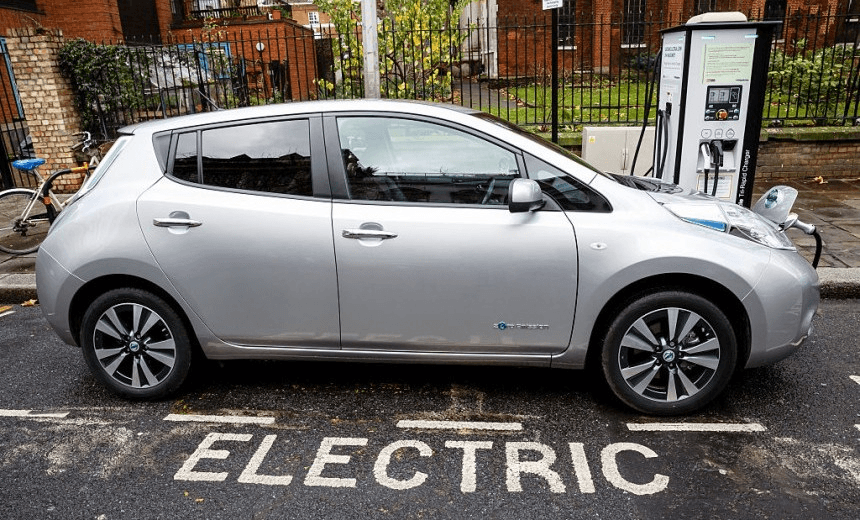Opinion: The government wants more electric vehicles on NZ roads. But the plan to let them drive in bus lanes can only throw improvements in bus services into reverse, writes Matt Lowrie.
The government wants to boost the currently dismal uptake of electric vehicles, increasing the numbers on our roads from about 1,200 to 64,000 in just five years. To do that, they have announced a package to encourage more people to buy an electric car. Most of the initiatives, such as extending the Road User Charges exemption on light vehicles and introducing an exception for heavy vehicles, are probably fine but one of the initiatives is completely nuts – letting electric vehicles use bus lanes and busways.
“The Government will make changes to the Land Transport Act and Rules to allow electric vehicles to drive in bus and high occupancy vehicle lanes on the State Highway network, which it controls,” the official fact sheet explains. “One example is the Northern Busway in Auckland.”
This is madness. The whole point of busways, bus lanes and to a lesser extend transit lanes is to make buses, which are much more spatially efficient, more viable and work better. They can make buses:
- faster, making them more attractive to use and can also make them time competitive with driving.
- more efficient, because buses are faster they can run more services can be run for the same cost or alternatively fewer vehicles and drivers may be needed
- more convenient as if they allow more services to be run it means higher frequencies so less time waiting at bus stops.
- more reliable as they’re more likely to arrive at stops and the final destination on time.
The introduction of bus lanes meant that far more people have been able to be moved along many key corridors than they would have otherwise. For example, the Northern Busway carries about 40% of all traffic crossing the Auckland Harbour Bridge during the morning peak – five lanes of traffic and 40% of the people are in fewer than 200 vehicles. On the city’s other corridors like Dominion Rd more than 50% of people are on the bus yet in both situations the lanes can look empty. But a bus lane that looks empty normally means it’s actually doing its job and allowing buses to flow, uninterrupted by congestion.
Adding electric vehicles to this – vehicles which will mostly be carrying only a single occupant, will undo some of the benefits and make buses less efficient. That’s because there’s a greater chance that buses will be held up or miss lights etc. It means a double decker carrying 100 people have the same level of priority as a single person in an electric car.
This isn’t just theoretical: back in 2010 the old Auckland City Council trialled changing the then Tamaki Drive bus lanes to T2, permitting any vehicle with two or more occupants. It actually had the effect, results showed, of slowing other road users, especially the general traffic. One of the reasons for this is the T2/3 drivers would push back in to the general traffic queue to get around buses at bus stops. I believe the same situation would apply to electric vehicles allowed in bus lanes.
It is worth noting that when the Northern Busway was first designed and approved it was it was done so with the idea that high occupancy vehicles (HOV) could potentially also be allowed to use it. This was because at the time they were worried not enough people would catch a bus and it is why, for example, there’s a blocked off access at the Constellation Station. Of course, as we know, not a single HOV has used the busway because it has performed above expectations.
There are other reasons electric cars in bus lanes is a bad idea.
Bus lanes are often considered cycle lanes, too. Allowing electric vehicles into those lanes could increase the risk for people on bikes. We also know from the recent Grafton Bridge trial (that has now ended) that many drivers simply don’t follow the rules. This would be no different with electric cars.
Getting single occupant vehicles back out of bus lanes in the future will be difficult. It’s also worth noting that other parts of the announcement had sunset clauses on them of either time or a once a percentage vehicles went electric. There was nothing mentioned for access to bus lanes.
Enforcement will be much harder as it is difficult to tell which vehicles are electric and which ones aren’t. In addition, many drivers seem to exhibit a bit of a herd mentality and if they see a couple of drivers getting an advantage they’ll start to copy. This would exacerbate the issues of cars in bus lanes.
Currently electric vehicles are more expensive than their fossil fuelled counterparts and the biggest buyers seem to be businesses for fleet cars. It means the benefit of driving in bus lanes will likely be predominantly enjoyed by a small(ish) group of early adopters.
Electric vehicles in bus lanes is a terrible idea, unless of course you drive an electric car already or are planning on getting one. The busway is owned by the NZTA but when it comes to most of the other bus lanes let’s hope that Auckland Transport are able to say no to his idea on local roads at least. If they can’t then the government will have managed to neuter bus lanes and risk setting them back years.
An earlier version of this post appears at Transportblog.co.nz

